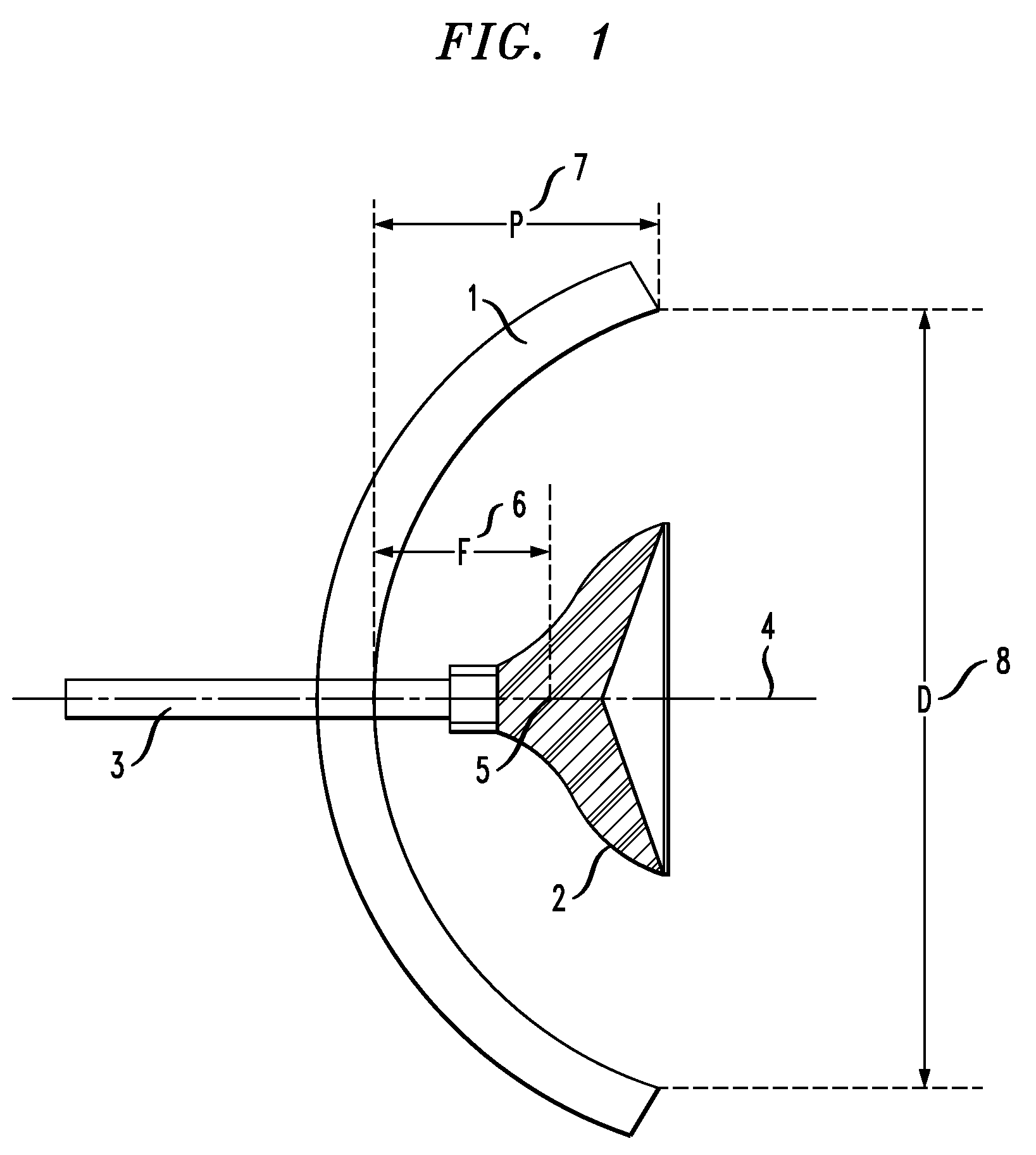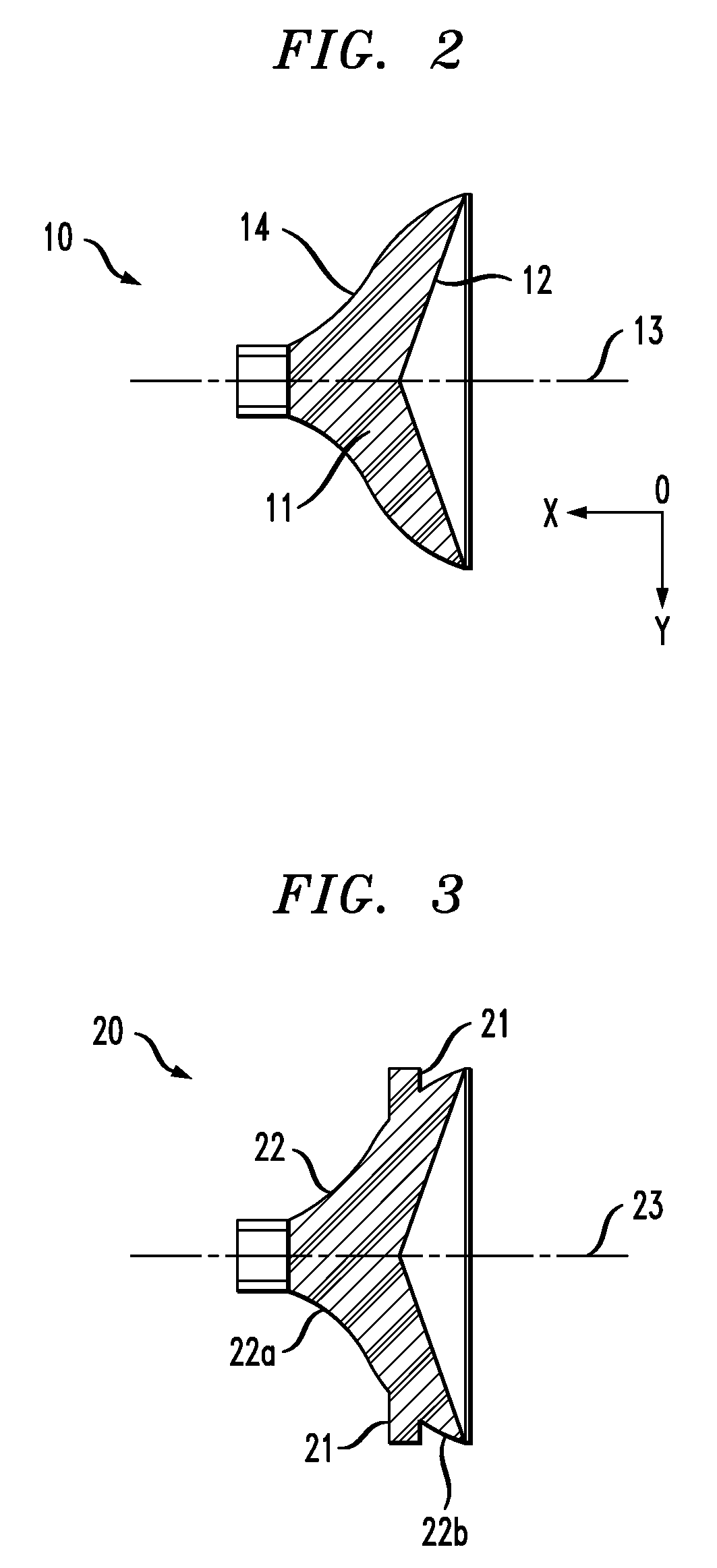Sub-reflector of a dual-reflector antenna
a dual-reflector, sub-reflector technology, applied in the direction of antennas, electrical equipment, etc., can solve the problems of rf waves polluting the environment, the cost of shroud material, and the cost of assembly of the shroud on the primary reflector, so as to reduce the loss of spillover
- Summary
- Abstract
- Description
- Claims
- Application Information
AI Technical Summary
Benefits of technology
Problems solved by technology
Method used
Image
Examples
first embodiment
[0051]In FIG. 1, an RF antenna in accordance with the invention is represented in axial section. This antenna comprises an assembly made up of a concave primary reflector 1 and of a sub-reflector 2, as well as of a waveguide 3 serving moreover as support mechanism to the sub-reflector 2. The assembly exhibits a rotational symmetry around the axis 4.
[0052]The primary reflector 1 can be made of metal with a reflective surface, for example aluminum. The waveguide 3 can be for example a hollow metallic tube, also made of aluminum, of circular cross-section having an exterior diameter of 26 mm or 3.6 mm for frequencies of transmission / reception respectively of 7 GHz and 60 GHz. Of course the waveguide could have a different cross-section, rectangular or square for example.
[0053]One has represented the focal point 5 (also called phase center) placed on the axis of revolution 4, and the focal length F 6 which separates the focal point 5 from the vertex of the primary reflector 1. The prima...
second embodiment
[0059]FIG. 3 represents the sub-reflector 20 of an antenna in accordance with the invention. A contour 21 forming a ring is arranged on the external surface 22 of the reflector 20. The profile of the external surface 22 on both sides of the contour 21 is a curve described by a polynomial equation of the sixth degree of the formula:
y=ax6+bx5+cx4+dx3+ex2+fx+g
[0060]In the second embodiment of the invention, the external surface 22 of the reflector 20 is thus made up of three successive parts 22a, 21, 22b. The parts 22a and 22b each exhibit a profile described by a portion of the curve of the sixth degree. The parts 22a and 22b and the contour 21 exhibit an axisymmetry around the axis of revolution 23.
[0061]The losses by spillover for transmission mode of an RF antenna in accordance with the first embodiment of the invention are clarified in FIG. 4. These losses correspond to the values of the angle of illumination 2θ of the primary reflector by the sub-reflector for which the RF waves ...
PUM
 Login to View More
Login to View More Abstract
Description
Claims
Application Information
 Login to View More
Login to View More - R&D
- Intellectual Property
- Life Sciences
- Materials
- Tech Scout
- Unparalleled Data Quality
- Higher Quality Content
- 60% Fewer Hallucinations
Browse by: Latest US Patents, China's latest patents, Technical Efficacy Thesaurus, Application Domain, Technology Topic, Popular Technical Reports.
© 2025 PatSnap. All rights reserved.Legal|Privacy policy|Modern Slavery Act Transparency Statement|Sitemap|About US| Contact US: help@patsnap.com



